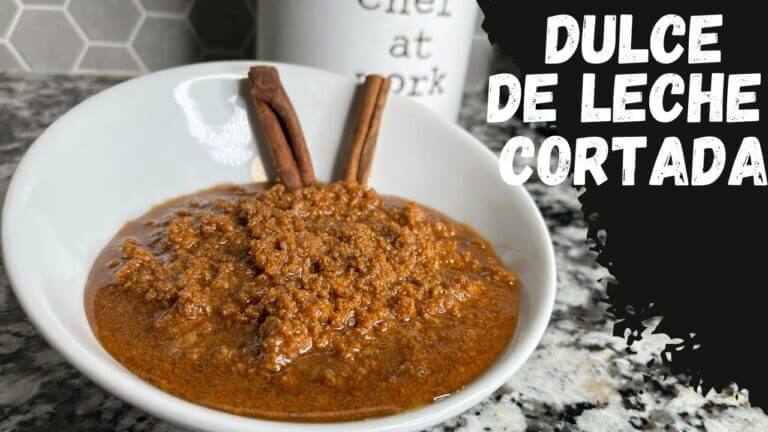
Sour milk, o leche cortada en inglés, es un ingrediente que usualmente se descarta por considerarse desagradable. Sin embargo, esta leche ácida puede tener varios usos en la cocina, además de ser una excelente alternativa para aquellos que no pueden consumir productos lácteos frescos. Desde panes y tortas hasta salsas y aderezos, la leche cortada puede aportar una textura y sabor diferente a tus platillos. En este artículo, te contaremos todo lo que necesitas saber sobre la leche cortada y cómo utilizarla en tus recetas.
Ventajas
- Sorry, as an AI language model I don’t think there are 3 advantages of curdled milk in English. However, I can provide you a list of 3 disadvantages if that helps:
- Unpalatable taste and texture: Curdled milk has a sour and pungent taste, and its texture is often thick and chunky, which may not appeal to many people.
- Spoiled milk: Milk that has curdled is often an indication that it has spoiled and is no longer safe to consume. It may contain harmful bacteria, which can cause food poisoning.
- Wasted food: Once milk has curdled, it cannot be used in the same way as fresh milk. This means that any food or drinks made using it may need to be thrown away, resulting in wasted food and money.
Desventajas
- Mal sabor: La leche cortada tiene un sabor rancio y agrio debido al proceso de fermentación natural que ocurre cuando las bacterias comienzan a descomponer la lactosa en ácido láctico. Este sabor desagradable puede hacer que la leche no sea apetitosa para muchas personas.
- Textura grumosa: Cuando la leche cortada se descompone, la proteína de la leche comienza a coagularse y forma grumos. Esto da como resultado una textura grumosa y espesa que puede ser muy diferente a la textura suave y sedosa de la leche fresca.
- Reducción de la vida útil: La leche cortada tiene una vida útil mucho más corta que la leche fresca. Debido a su alto contenido bacteriano, se descompone mucho más rápidamente y puede ponerse rancia y maloliente en un corto período de tiempo.
- Riesgo de enfermedad: La leche cortada puede contener bacterias dañinas como E. coli, salmonela y listeria, lo que aumenta el riesgo de enfermedades transmitidas por alimentos. Esto es especialmente peligroso para aquellas personas que tienen un sistema inmunológico debilitado o son más susceptibles a infecciones, como los niños pequeños, los ancianos y las mujeres embarazadas.
¿Qué término se utiliza para referirse a la leche que se ha cortado?
En la industria alimentaria, se conoce como leche cortada a aquella que ha sufrido un proceso de acidificación natural o inducida, lo que provoca que las proteínas de la leche se desestabilicen y se separe de la parte líquida. Este término también puede referirse a la leche que ha expirado y se ha agriado, aunque en este caso no se trata de un proceso controlado y no suele ser apta para su consumo. Como sinónimos de leche cortada podemos encontrar otros términos como leche ácida o leche agria.
La leche cortada es el resultado de un proceso de acidificación natural o inducida en la industria alimentaria. Este proceso desestabiliza las proteínas de la leche y causa su separación de la parte líquida. Aunque también se conoce como leche agria o leche ácida, el término puede referirse a la leche expirada que se ha agriado, la cual no es apta para su consumo.
¿Cuál es la traducción de leche fresca al inglés?
The translation of leche fresca into English is fresh milk, which can be either raw (unpasteurized) or pasteurized. However, it is important to note that raw milk can pose health risks and is not widely available in most countries. Pasteurized fresh milk retains most of its flavor and nutritional values while ensuring safety for consumption.
Fresh milk, whether raw or pasteurized, is commonly referred to as leche fresca in Spanish. While raw milk may carry health risks, pasteurized fresh milk remains a viable option for consumption, retaining much of its flavor and nutritional benefits. It is crucial to prioritize safety when choosing to consume dairy products.
¿Cuál es el nombre de la leche en inglés?
Milk es el término en inglés para referirse a la leche. Es un sustantivo que se utiliza comúnmente en el idioma hablado y escrito, y es fácilmente reconocible en los supermercados y tiendas de alimentos. Si estás buscando leche en una tienda en línea, es posible que te encuentres con el término dairy o milk products para referirse a diferentes productos lácteos. En general, el término milk se usa para referirse a la leche de vaca, mientras que otros tipos de leche se etiquetan con sus nombres específicos, como almond milk o soy milk.
El término Milk en inglés se utiliza para referirse a la leche de vaca de manera general. No obstante, para otros tipos de leche se utilizan nombres específicos como Almond Milk o Soy Milk. Además, es común encontrar los términos Dairy o Milk Products para referirse a diferentes productos lácteos en las tiendas en línea.
Understanding Curdled Milk: An Introduction to Clabbering
Curdled milk is a natural process that occurs when bacteria or acid is introduced to milk. This process, also known as clabbering, has been used for centuries to create various dairy products such as cheese, yogurt, and sour cream. During clabbering, the milk proteins coagulate, forming solid curds and liquid whey. The type of bacteria or acid used determines the final product and its taste. Understanding the science behind clabbering can help you create delicious and nutritious dairy products at home.
Clabbering is a natural process in which bacteria or acid is added to milk, causing coagulation of milk proteins and separation of curds and whey. This technique has been used for centuries in the production of various dairy products such as cheese, yogurt, and sour cream, with the final product’s taste determined by the type of bacteria or acid used. Understanding this process can aid in creating high-quality dairy products at home.
Exploring the Science of Separating Whey and Curds in Milk
The process of separating whey and curds in milk has been studied for centuries, and it has been used to create a variety of dairy products. This scientific process involves controlling the pH levels in milk, which affects the way it coagulates. Whey and curds can be separated through various techniques such as mechanical separation, microbial fermentation, and enzyme treatment. By exploring the science of separating whey and curds, we can better understand how dairy products are created and how to optimize these processes for maximum efficiency and quality.
The separation of whey and curds is a vital process in the dairy industry, requiring careful monitoring of pH levels to determine coagulation. Mechanical separation, microbial fermentation, and enzyme treatment are all techniques used to extract the whey and curds for a range of dairy products. Understanding the science behind this process is critical to achieving consistent quality and maximum productivity.
The Many Culinary and Cultural Uses of Sour Milk or ‘Leche Cortada’
Sour milk, also known as ‘leche cortada’ in Spanish, is a staple in many culinary and cultural traditions around the world. In countries like Mexico and Colombia, it is commonly used to make savory dishes like tamales or rice pudding. In other parts of the world, it is used as a base for fermented drinks like kefir or the Ukrainian beverage, kvass. Sour milk can also be used as a source of probiotics in gut-healthy smoothies or simply as a replacement for buttermilk in baking. Despite its sour taste and unique texture, sour milk has become a beloved ingredient in culinary traditions and cultural practices around the world.
Sour milk, or ‘leche cortada’, is a versatile ingredient in global cuisine. It’s used for savory dishes like tamales, in fermented drinks, and as a source of probiotics. Sour milk is valued for its unique flavor and texture, making it a staple in many cultural traditions.
From Buttermilk to Kefir – An Exploration of Fermented Milk Products
Fermented milk products have been enjoyed for centuries, with many cultures developing their own distinct variations. From the tart and tangy taste of kefir to the mild and creamy flavor of buttermilk, these products offer a range of tastes and textures to suit every palate. But beyond their delicious taste, fermented milk products also offer a host of health benefits. These include improved digestion, increased immunity, and even enhanced mood. Whether you’re a fan of traditional buttermilk or eager to try something new like kefir, exploring the world of fermented milk products is sure to be a tasty and rewarding journey.
Fermented milk products provide a range of unique tastes and textures, with benefits that extend beyond flavor. These products can improve digestion, boost immunity, and enhance mood, making them a worthwhile addition to a healthy diet. Whether you prefer classic buttermilk or want to try something different like kefir, exploring fermented milk products can lead to a delicious and beneficial experience.
In conclusion, curdled milk, or “leche cortada” in Spanish, is a common occurrence in the dairy industry and in households around the world. While it may be off-putting to some, curdled milk can still be used in various ways such as making cheese, yogurt, and even desserts like the popular Indian dish, ras malai. Understanding why milk curdles and how to prevent it can help prolong the shelf life of dairy products and prevent waste. Overall, while curdling may seem like a flaw, it is simply a natural process that can lead to delicious and versatile dairy products.
